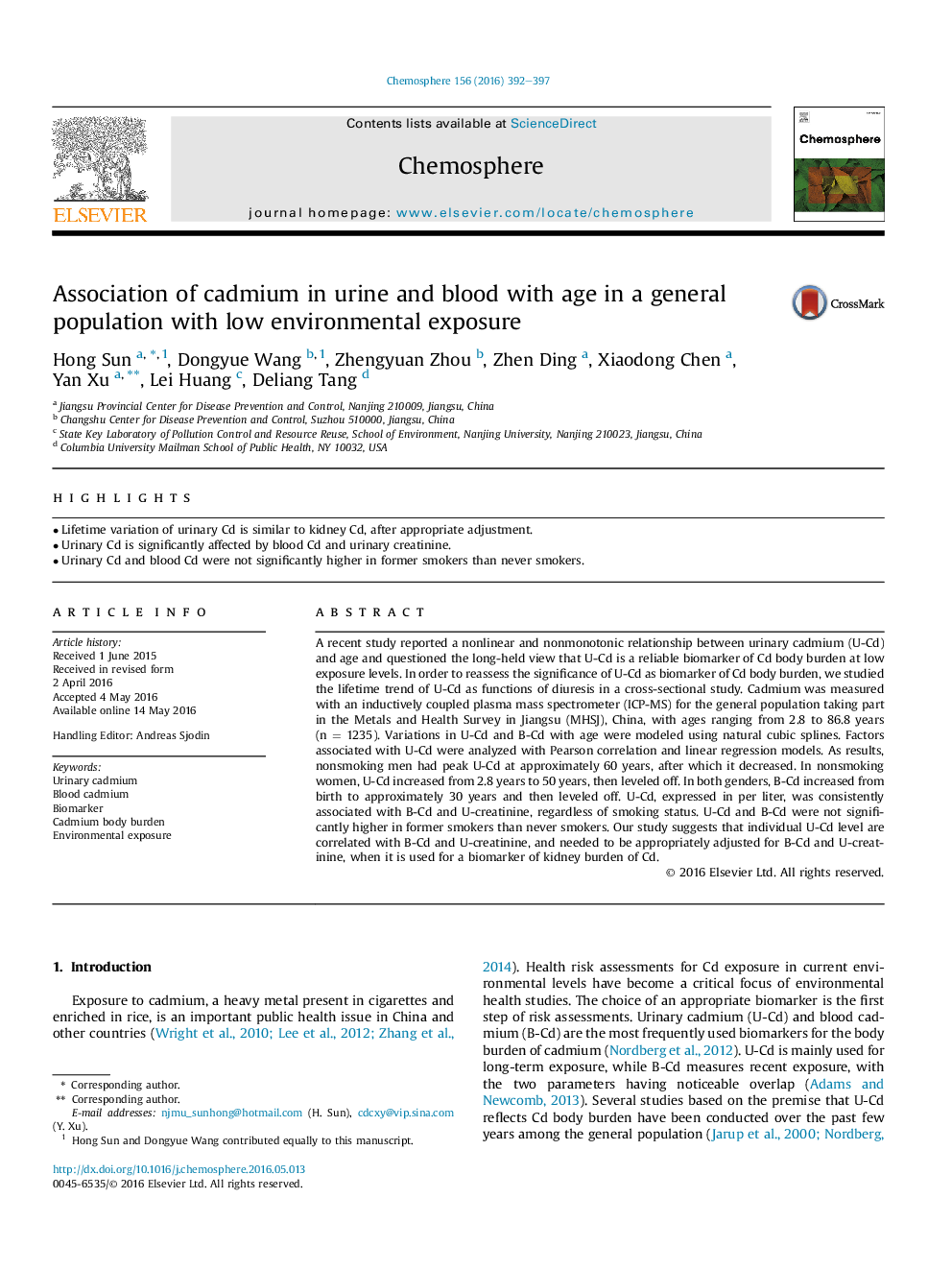| Article ID | Journal | Published Year | Pages | File Type |
|---|---|---|---|---|
| 4407727 | Chemosphere | 2016 | 6 Pages |
•Lifetime variation of urinary Cd is similar to kidney Cd, after appropriate adjustment.•Urinary Cd is significantly affected by blood Cd and urinary creatinine.•Urinary Cd and blood Cd were not significantly higher in former smokers than never smokers.
A recent study reported a nonlinear and nonmonotonic relationship between urinary cadmium (U-Cd) and age and questioned the long-held view that U-Cd is a reliable biomarker of Cd body burden at low exposure levels. In order to reassess the significance of U-Cd as biomarker of Cd body burden, we studied the lifetime trend of U-Cd as functions of diuresis in a cross-sectional study. Cadmium was measured with an inductively coupled plasma mass spectrometer (ICP-MS) for the general population taking part in the Metals and Health Survey in Jiangsu (MHSJ), China, with ages ranging from 2.8 to 86.8 years (n = 1235). Variations in U-Cd and B-Cd with age were modeled using natural cubic splines. Factors associated with U-Cd were analyzed with Pearson correlation and linear regression models. As results, nonsmoking men had peak U-Cd at approximately 60 years, after which it decreased. In nonsmoking women, U-Cd increased from 2.8 years to 50 years, then leveled off. In both genders, B-Cd increased from birth to approximately 30 years and then leveled off. U-Cd, expressed in per liter, was consistently associated with B-Cd and U-creatinine, regardless of smoking status. U-Cd and B-Cd were not significantly higher in former smokers than never smokers. Our study suggests that individual U-Cd level are correlated with B-Cd and U-creatinine, and needed to be appropriately adjusted for B-Cd and U-creatinine, when it is used for a biomarker of kidney burden of Cd.
